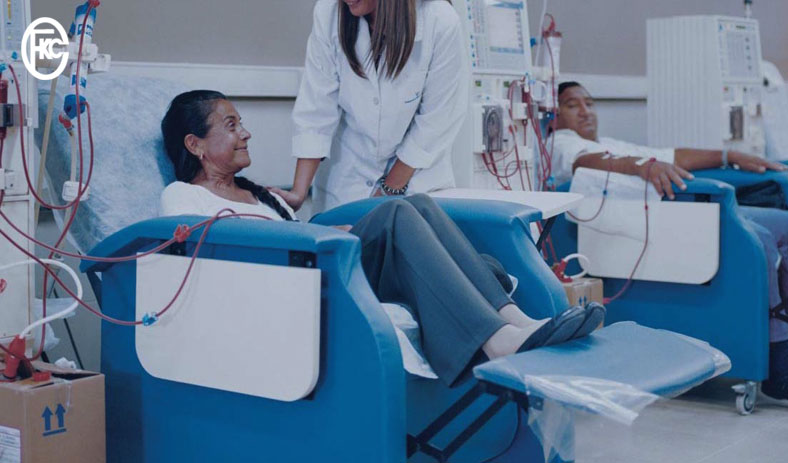
Peritoneal dialysis (PD) and hemodialysis (HD) are two dialysis methods that have recently seen an increase in interest in evaluating health outcomes throughout the spectrum. As chronic disorders like kidney disease (CKD) become more common, this is largely to blame (HD). End-stage renal disease patients who cannot get a kidney transplant may use any of these methods of dialysis.
Blood is drawn from your body and passed through an artificial kidney known as a dialyzer before being returned to your body after being cleaned. Dialysis may be performed at a dialysis center or at the patient's home.
Hemodialysis, on the other hand, removes waste from the blood outside the body, whereas peritoneal dialysis removes waste from the blood within the body. Using a catheter, cleaning solution may be pumped into the abdomen, where it can perform its job. Urinary fluid and waste materials are excreted as a single unit after being withdrawn from circulation by the abdominal lining. Choosing the hemodialysis centers in Florida is essential now.
.png)
Contrary to hemodialysis, which necessitates the use of an artificial kidney machine in order to filter blood, peritoneal dialysis does not. Hemodialysis and peritoneal dialysis differ primarily in this respect. Instead of using a machine, peritoneal dialysis utilizes the body's own natural blood filter, the peritoneal lining.
Dialysis centers may be found all throughout the country, but some patients prefer the freedom and independence that comes with using home peritoneal dialysis instead of hemodialysis since it is more convenient and less time consuming than going to a hospital for regular hemodialysis treatments.
Continuous filtration is provided by peritoneal dialysis, which does not need as much disruption to your everyday routine as other kinds of dialysis. It's the therapy of choice for those with decreased renal function to use hemodialysis. Peritoneal dialysis is not recommended for patients who are obese or have scarring around the abdomen.
This leads in reduced accumulation of fluid, potassium, and sodium in the peritoneum, as compared to hemodialysis. As a result, peritoneal dialysis allows you to have a more flexible diet than hemodialysis would allow you to have. Peritoneal dialysis, as opposed to hemodialysis, may allow patients to maintain kidney function for a somewhat longer amount of time. Choosing peritoneal dialysis in Florida is the best option here.
Patients who have lost a substantial amount of renal function require hemodialysis therapy. Approximately 10% to 15% of the kidney's typical functioning is left. End-stage renal disease (ESRD) and kidney failure are also terms used to describe this medical condition.
In the event that you are unable to deal with the rapid changes in fluid balance that come with hemodialysis, peritoneal dialysis may be the best option for your treatment needs.
AV fistula or graft problems might occur after hemodialysis treatment. A blood clot or scar tissue-induced obstruction is all possibilities. You might also become infected.
Skin infections surrounding the catheter in the abdominal cavity occur in certain peritoneal dialysis patients. Peritonitis, an infection that occurs when germs enter the abdomen via the catheter, is also a possible side effect.
In many cases, dialysis patients are able to maintain full and productive lives despite their illness, including working, raising families, and travelling. Many studies have shown that 10 to 20 years of dialysis survival is possible.